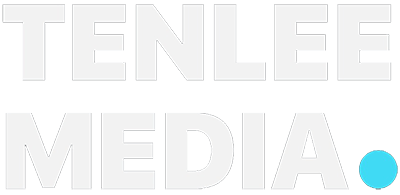Google Ads is a marketplace where companies pay to have their website ranked at the top of a search results page based on keywords. When people go to Google, they’re looking for something specific. That means they have intent; they’re actively looking for something. Your goal is to be the ad they click on when they are searching for your product or service. How do you make that happen? Read on to find out…
First off, here are some terms you need to know
- Keywords: These are the words or phrases that people type into Google Search, which prompts your ad to appear. When setting up an ad campaign, you’ll pick a list of keywords that you think people might search for when they want what you have to offer.
- Bid: This is the maximum amount you’re willing to pay when someone clicks on your ad.
- Quality Score: This metric tells you how relevant your keywords are to your ad and to your landing page.
- CPC (cost-per-click): The actual amount you pay when someone clicks on your ad.
- Conversion: A conversion takes place when someone who has clicked your ad goes on to take another action you’ve designated.
- Ad Rank: This metric helps determine where your ad will show up, relative to other ads, when it’s triggered to appear on Google. Your rank is determined using your bid, your Quality Score, and *other* mysterious factors.
Then you need to organize your account
Start by breaking down your products or services into categories, and basing your account structure on those. There are two levels of organization within an Ads account: campaigns (the higher level) and ad groups (the lower level, you can have multiple ad groups in each campaign). Think about campaigns as representing larger categories in your business, and ad groups as representing smaller, more specific sets of products or services.
Set your budget
With PPC Ads, you control how much you spend using two different settings: your daily budget and your bids. Your budget is the amount you want to spend on each campaign per day. Your bid is the amount you’re willing to spend on a keyword if someone searches for that term and then clicks your ad. Google Adwords is performance-based: meaning you’re not paying for eyeballs, you’re paying for results. So if you don’t get any clicks, leads or sales – you don’t pay.
Pick your keywords & set your keyword match types
The goal when picking keywords is to choose terms that you think people will search for when they’re looking online for what you offer. You also want your keywords to be as relevant as possible to the ad they trigger and to the landing page people will arrive at.
“Keyword match type” is a setting in Google Ads that lets you further refine when your ad will show up on Google.
Here are your options:
Broad Match: The “broad match” setting shows your ad for searches that contain your keywords in any order, and for related terms.
Broad Match Modifier: This setting allows you to specify that certain words in your broad-match keyword must show up in a user’s search to trigger your ad.
Phrase Match: This option shows your ad for searches that contain your exact keyword, or for searches that contain your exact keyword plus words before or after it.
Exact Match: When you choose exact match, your ad will only show if someone searches for the exact word or phrase you choose.
Negative Match: This match option allows you to exclude undesirable words or phrases from triggering your ad, weeding out irrelevant traffic.
Set your landing pages
Your landing page is where potential customers arrive after clicking on your ad. Choosing a page that’s relevant to your ads and keywords can help people find what they’re looking for more quickly. You may want to create a specific landing page that is relevant to what your ad is promoting, as opposed to simply linking to your general website. This will make it easier for potential customers or clients to take action in relation to the specific service or product they want.
Decide which devices to show up on
Do your ideal customers search on a desktop, mobile device, or both? As you set up your Google Ads account, consider which types of customers you want to connect with.
Write your ads
Your ad is the first impression many people will have of your business, so make sure it communicates in a clear, concise and engaging way. This is easiest when the ad actually contains the keywords people search for; which you can accomplish by breaking your campaign out into clear ad groups and writing unique ads for each.
Ta-da! Make your ads live
You did it! You’re ready to activate your campaigns. But don’t just click go and run off! You have to frequently keep an eye on your campaigns to understand which ads and keywords are bringing you the most clicks and conversions. Over time, you’ll start to observe which strategies are helping you meet your goals, and which need adjusting.
PSA: If reading these steps didn’t thrill and excite you – maybe you should let us take care of your Google Adwords campaigns? We here at Tenlee Media absolutely can’t get enough of Google Ads, and would be happy to take care of all of this for you. Contact our PPC specialists ASAP so we can get started creating successful campaigns for you!
- Written by: Ely Faigenblat
- Posted on: January 6, 2020
- Tags: adwords consultant, adwords management, adwords specialists, google ads service, google adwords management, ppc specialists, Tenlee, tenlee media

